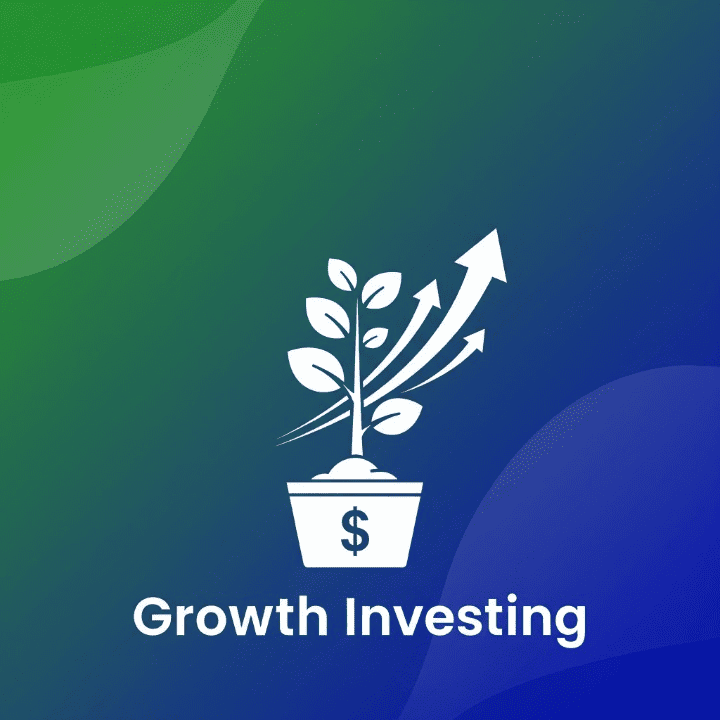
Introduction
While some investors prefer the stability of dividends or the security of value stocks, others are drawn to the potential for explosive returns. They are the ones who look for the next big thing, the company that is poised to change an industry and grow its earnings at an accelerated rate. This investment philosophy is called growth investing. It’s a strategy that focuses on buying shares of companies that are expected to grow faster than the overall market. Growth investing can lead to incredible wealth creation, but it also comes with a higher level of risk. A growth stock’s high valuation can plummet if the company fails to meet expectations. Understanding this strategy is a crucial step for anyone who wants to take a more active and ambitious role in their financial planning. This comprehensive guide will demystify growth investing, explaining its core principles, its key benefits and risks, and the practical steps you can take to build a portfolio designed for long-term growth.
What Exactly is Growth Investing?
Growth investing is a strategy that focuses on capital appreciation. It’s about buying stocks of companies that have a high potential for future growth. A growth investor isn’t concerned with dividends or a company’s current profitability. Instead, they focus on a company’s ability to expand its revenue, increase its market share, and innovate in a way that disrupts an industry. These companies are often young, in a new or rapidly expanding industry, and tend to reinvest all their earnings back into the business to fuel further growth. Because of this, they often have a high valuation, which means their stock price is high relative to their current earnings. This is a bet on the company’s future potential.
The Key Difference: Growth vs. Value
It’s important to distinguish between a growth and a value investing approach.
- Value Investing: Focuses on buying companies that are currently undervalued by the market. The goal is to buy a stable, mature company on sale.
- Growth Investing: Focuses on buying companies that are expected to grow rapidly. The goal is to buy a company with a high valuation in the hope that its future growth will justify its current price and lead to massive returns.
A growth investor is willing to pay a premium for a company’s future potential, while a value investor is looking for a discount on a company’s current value.
The Core Principles of Growth Investing
Successful growth investors share a common mindset and a set of core principles that guide their decisions.
1. Focus on Future Potential
A growth investor spends most of their time looking forward. They ask questions like:
- Is this company’s market large and growing?
- Does this company have a durable competitive advantage?
- Is the company’s management team visionary and effective?
- Can this company disrupt an existing industry?
This forward-looking perspective requires a deep understanding of market trends, technology, and industry dynamics.
2. Embrace Volatility
Growth stocks are often volatile. Because their high valuations are based on future expectations, any negative news or a failure to meet earnings forecasts can cause a significant price drop. A growth investor must be comfortable with this volatility and resist the urge to panic sell during a downturn. They see these drops as a potential opportunity to buy more shares at a lower price.
3. Do Your Homework
The high risk of growth investing demands a high level of research and due diligence. A growth investor can’t just rely on a company’s balance sheet or its current profits. They must understand the company’s business model, its industry, and the risks it faces. This means reading every earnings report, understanding the company’s latest products, and staying on top of industry news.
How to Build a Growth Investing Portfolio
Building a growth portfolio is a strategic process that requires a disciplined approach.
Step 1: Start with a Solid Foundation
For any investor, a solid foundation is crucial. Before you start buying individual growth stocks, make sure the core of your portfolio is in low-cost, diversified index funds or ETFs. These funds will provide stable, long-term returns and protect you from the high risks of a growth-only strategy. A good approach is the core-and-satellite strategy, where a large portion of your portfolio is in stable index funds (the core), and a smaller portion is in growth stocks (the satellites).
Step 2: Look for High-Growth Industries
The best growth stocks are often found in industries that are in their early stages of rapid expansion. Think of industries like:
- Technology: Artificial intelligence, cloud computing, and cybersecurity.
- Healthcare: Biotechnology and medical technology.
- Renewable Energy: Solar, wind, and electric vehicles.
- Consumer Discretionary: Innovative e-commerce companies and entertainment.
Step 3: Use Key Metrics for Growth Stocks
While a value investor focuses on metrics like the P/E ratio, a growth investor looks for different signals.
- Revenue Growth: Look for companies that are consistently growing their revenue at a fast rate, often 20% or more per year.
- Market Share: Is the company gaining market share in its industry?
- Scalability: Does the company’s business model have the potential to scale rapidly without a significant increase in costs?
- Earnings Surprise: Does the company consistently beat its earnings expectations?
The Risks and Challenges of Growth Investing
Growth investing is not for everyone. The potential for high returns comes with a significant level of risk.
1. High Valuations
Because growth stocks are priced on future expectations, they can be overvalued. If the company’s growth slows or a competitor emerges, the stock price can fall dramatically.
2. Volatility
A growth portfolio is much more volatile than a diversified index fund. During a market downturn, your growth stocks can fall much further and faster than the rest of the market. This is why it’s so important to have a disciplined approach and not panic sell.
3. Competition
The growth landscape is full of competition. A company that seems dominant today could face a serious threat from a new startup tomorrow.
4. Lack of Dividends
Growth companies typically don’t pay dividends. They reinvest their profits back into the business, so you don’t get a passive income stream. Your returns come solely from the appreciation of the stock price.
Conclusion
Growth investing is an exciting and potentially very lucrative strategy for ambitious investors. It offers the chance to get in on the ground floor of companies that are poised to change the world. By understanding its core principles—a focus on future potential, an acceptance of volatility, and a commitment to deep research—you can build a portfolio designed for accelerated returns. However, growth investing is not a magic bullet. It should be a part of a broader financial planning strategy that includes a stable, diversified core portfolio. By building a disciplined approach and staying patient, you can explore the high-risk, high-reward world of growth investing with confidence.



